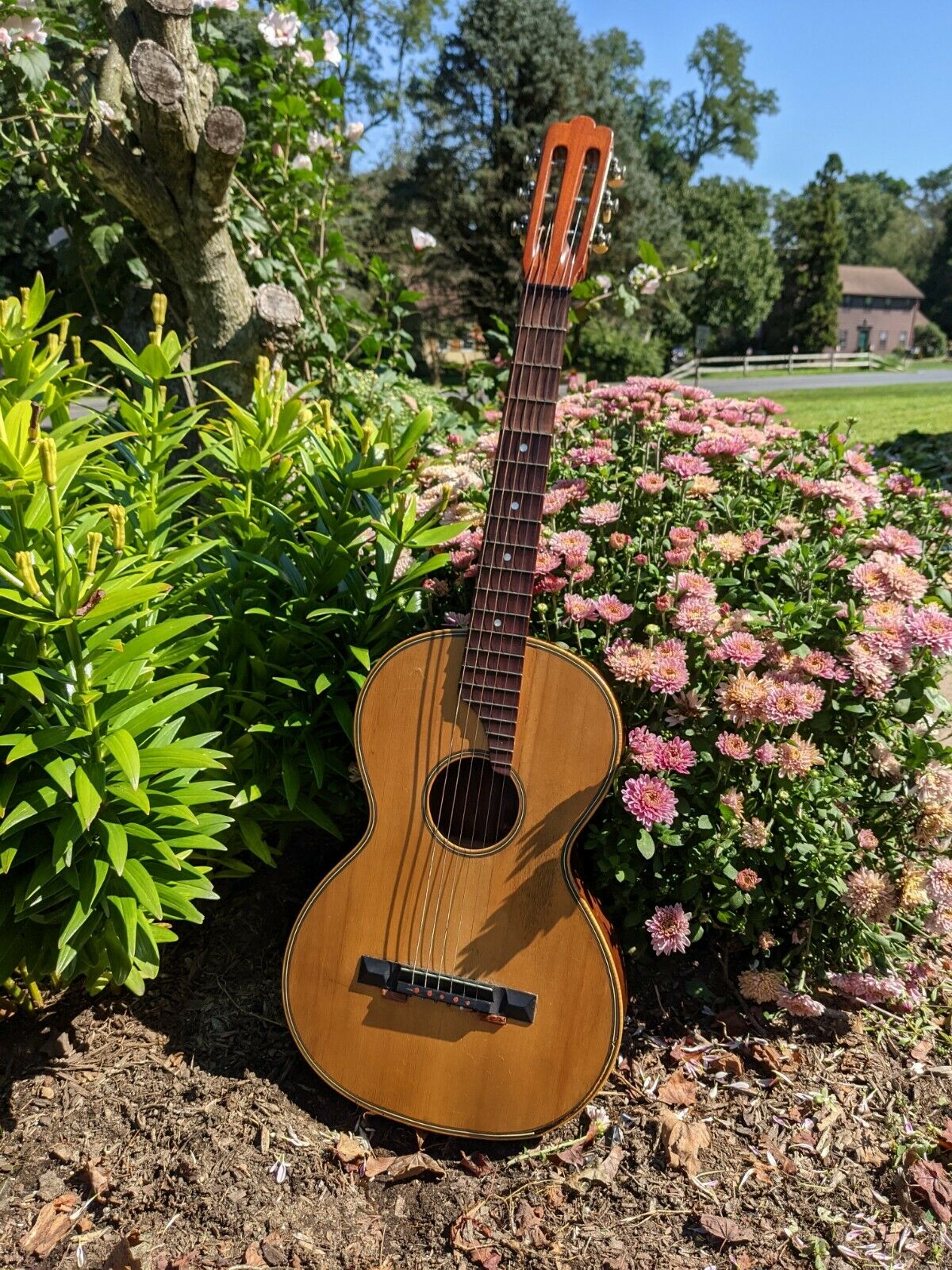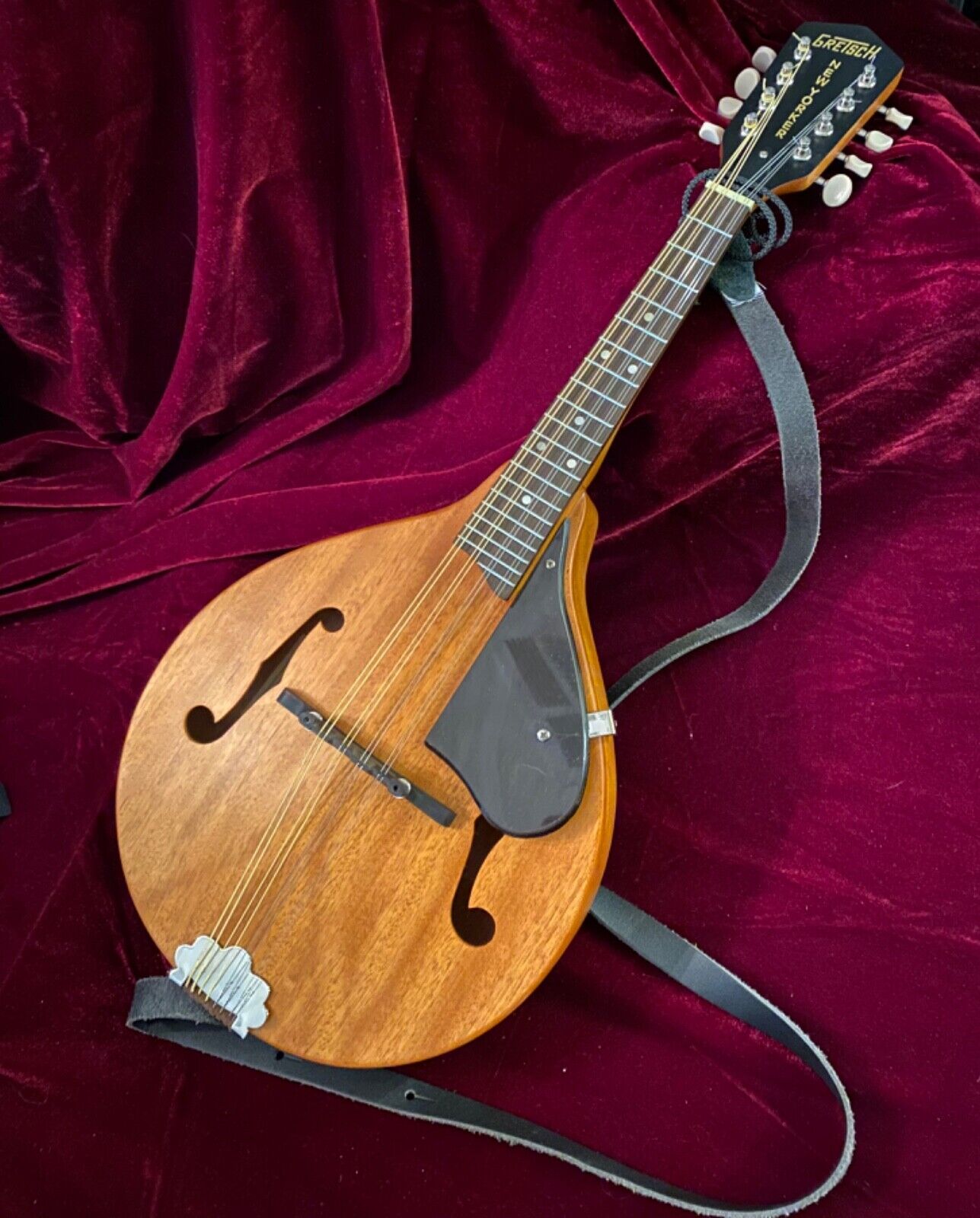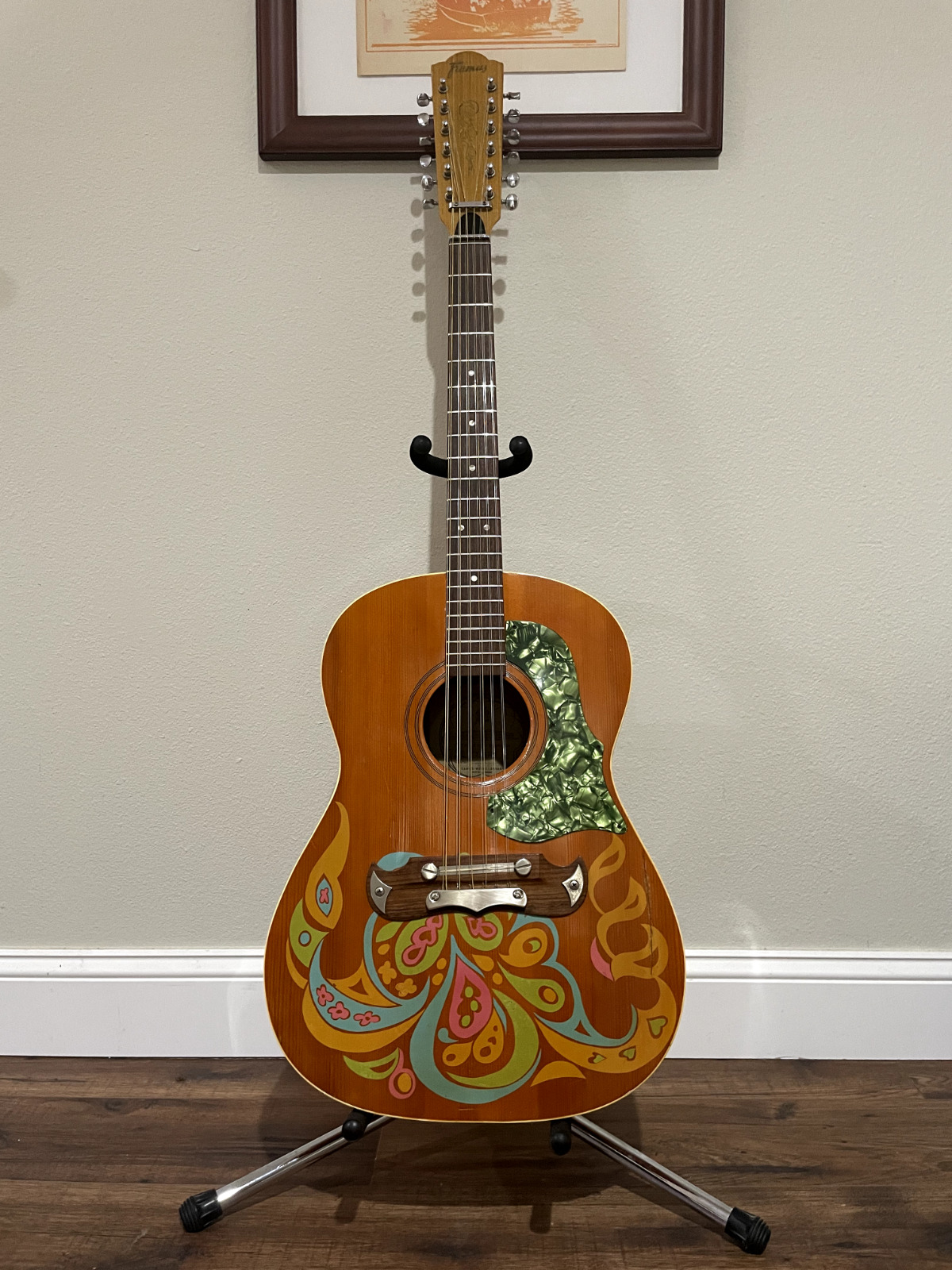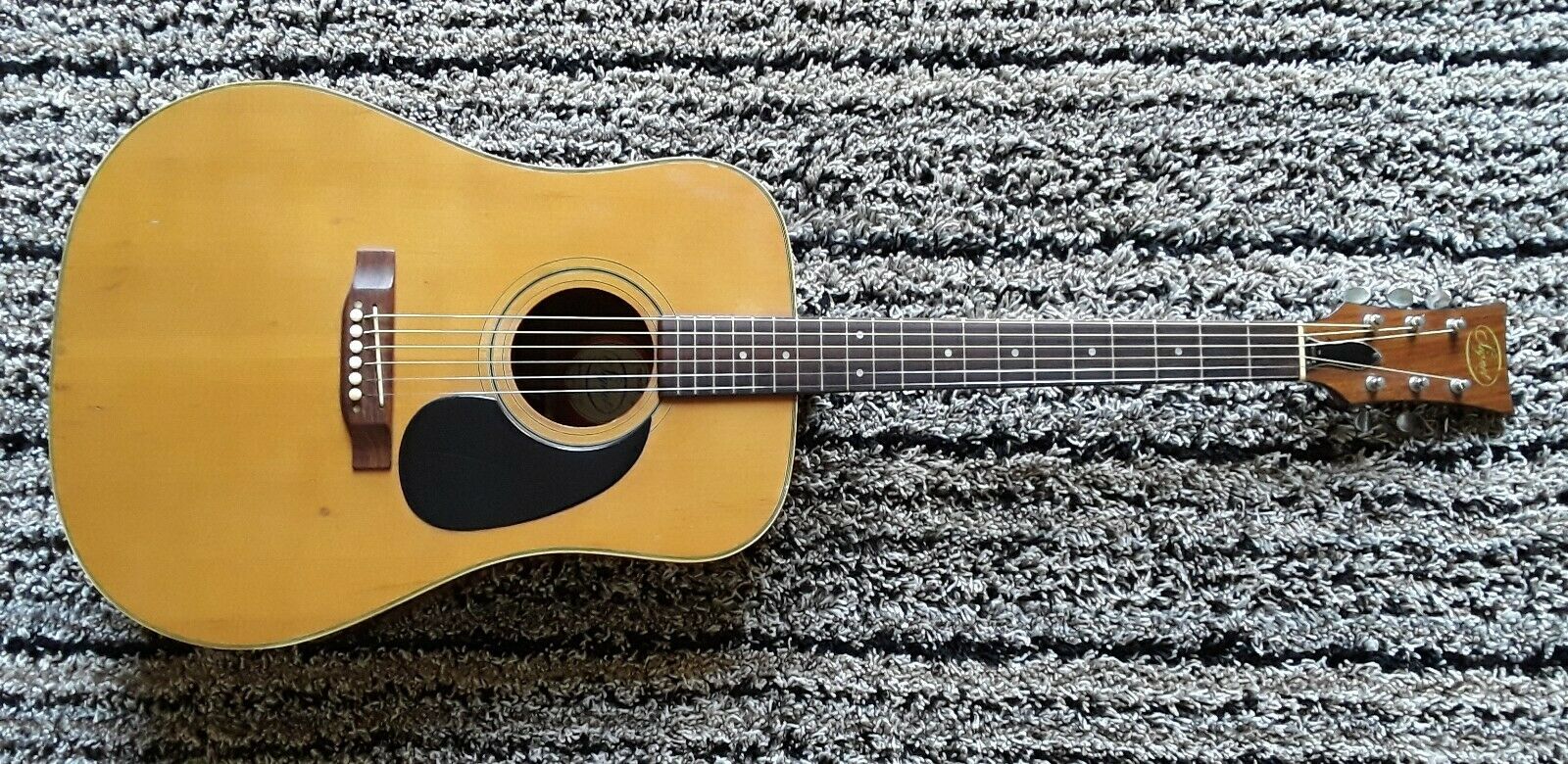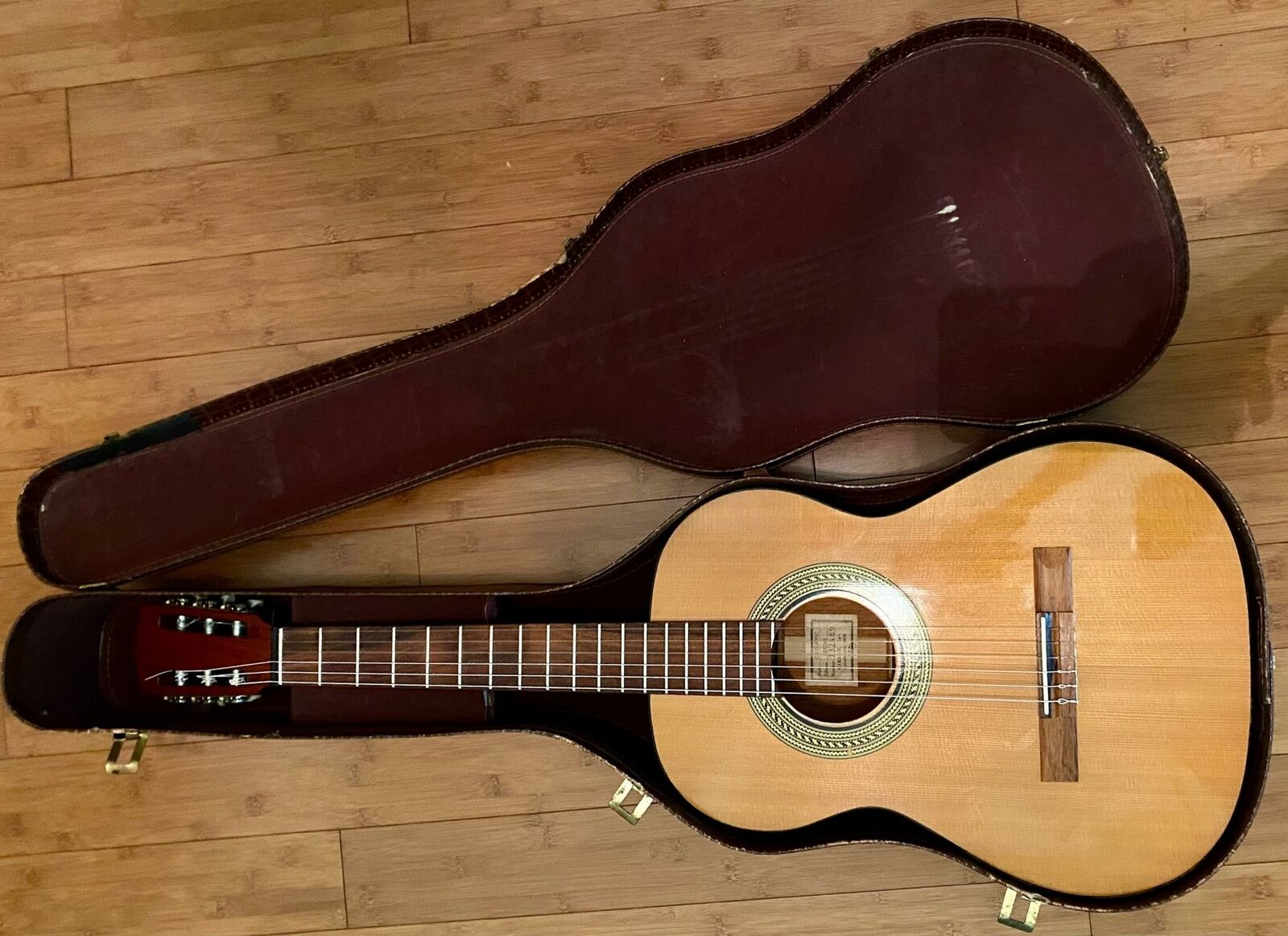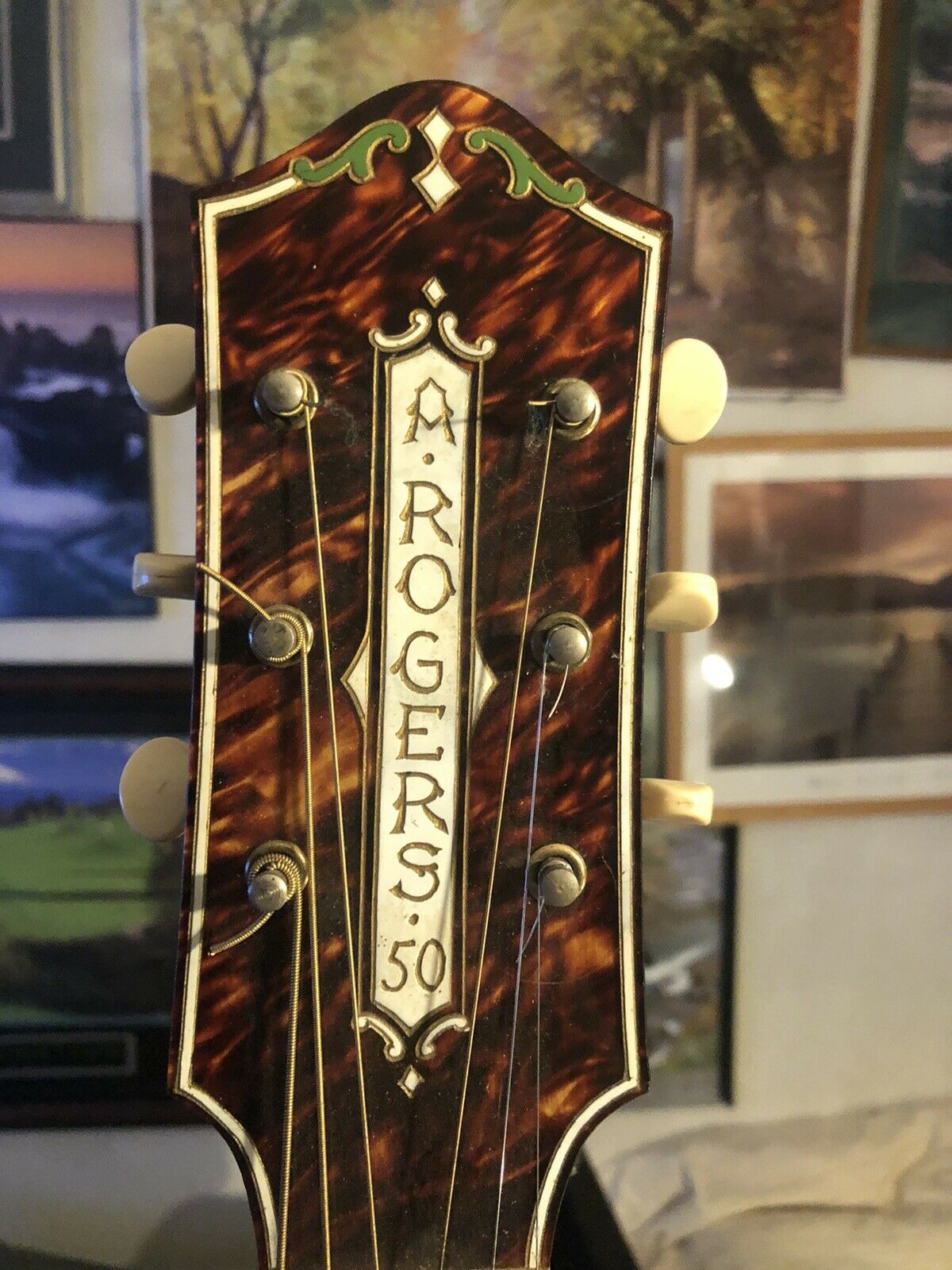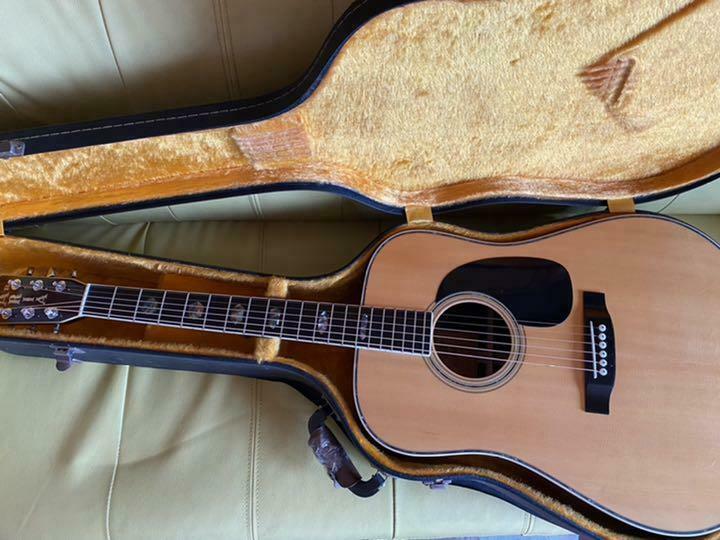-40%
Early 70s high-end Conn acoustic in stunning condition, Made in Japan
$ 211.2
- Description
- Size Guide
Description
The following is condensed from the Conn guitar enthusiast website:“
Conn was a well-known and established brand, and wanted to enter the booming guitar market in the early 1970s. No guitars were actually made in Conn’s Oakbrook, Illinois factory. Instead they were built to Conn's design standards by contract manufacturers in Japan. Initially, they were Tokai Gakki, then Matsumoko, both higher-end luthier houses in Japan. The first employee of the official Conn Guitar division was Jerry Ackley. Jerry, who was a guitar player himself, was hired in August of 1970 and was tasked with setting up and building the Conn guitar business--with an emphasis on building upon the relationship that Conn already had with schools in the brass and woodwind market. Tokai-Gakki in Hamamatsu was the factory who was the first to build the first Conn guitars. Tokai already had their own line of instruments--known mostly for their classical instruments. All initial production guitars were made there until at least 1972--and probably afterward as well (history after 1972 is vague).
After Jerry established the business, he left Conn in 1972 to pursue other ventures. It was a time of great competitiveness in the guitar industry, and manufacturers—Japan especially--raced to make their capabilities known and to gain market share in the booming guitar business. Conn was seen as a lucrative customer, given their their huge distribution network, their reputation, their readiness to spend the cash, and their long-established relationships. After 1972, Aria factories (who also produced some Yamaha guitars under contract to Yamaha) may have succeeded in gaining some of the Conn business, and may have made several models under contract to Conn (Conn branded). Some sources state that Matsumoku built almost all Conn acoustic guitars after 1972--but this is unsubstantiated.
There are few records that exist about Conn's history before 1981 because, according to the Conn-Selmer company, all records of that era "were destroyed". Any and all remaining information, including catalogs and brochures about the former company are in the hands of private individuals. Research into
the
9-year Conn guitar history is somewhat inhibited by these limiting factors, and information becomes increasingly difficult to obtain as former employees of that era are aging, and others are no longer alive.
Ackley devised the first labeling scheme for Conn,
a
nd for the first
three
years of production, that original labeling scheme was consistently followed. Mr. Ackley's labeling methodology went like this: Every Conn classical model carried a gold label, and every steel string model carried a silver label. Serialization for these first guitars was actually devised by the Tokai Gakki factory in Japan, and followed a specific type of pattern
that was similar to the pattern used by Yamaha.
Nearly every Conn acoustic guitar made from
1971 through 1977
bore an adhesive-backed gold or silver label (either very thin foil or thicker aluminum plate laminated to a thin plastic film backing material) mounted to the inside back--visible inside the soundhole. Higher-end Conns that have inside graft strips (2-piece and 3-piece backs) have either
(a
) a heavier label of thicker aluminum--more like the thickness of a credit card or hotel key card, or (b) model number stamped into the wood heel block (inside where the neck is mounted to the body). Almost all other models have a label similar to foil. Those 1971 thru 1977 Japan-made guitars that have the labels, on which model numbers and serial numbers appear, seem to have been hand written with a ball-point pen--and which most are legible. Conn labels are found both very neatly written, or barely legible, and everything in between! This legibility issue stands to reason--try writing with a ball point pen on a piece of aluminum foil. Stamping of the heel block (inside the guitar) was used on some of the high-end Japan-made Conns (F-28, F-29, F-31, F-35, F-60, F-65, F-70, F-75)--while others in the same model range had labels.”
From that information, I have concluded that my Conn is a
more
higher-end model because it has the two-piece back with graft strip and the credit-card-thick aluminum data plate. My data plate is one where some of the information is very legible, but a few numbers are not, including the model number. It looks a lot like “F21”, but
I couldn’t find where
the F21 model wasn’t made with the solid aluminum data plate, so
we have a little mystery.
Pictures of the F21 in old Conn catalogs look exactly like mine, so….
IF it is an F21, then Conn says it has a spruce top (doesn’t say solid or laminate), Saphere (essentially Asian mahogany) back & sides,
nato neck,
ebony fingerboard and bridge
and a “uri-bone” saddle
. There are large, square mother-of-pearl fret markers and “
deluxe chrome”
closed-back tuners, the latter usually only appearing on higher-end Japanese guitars in the 1970s.
Mine has lived a charmed life and it shows. There are no dings anywhere – face, back,
sides,
bindings, headstock, - nowhere! No cracks, splits or gouges, and no previous repairs.
Just look at the pictures!
There are a few very minor scratches and boo-boos here an
d
there, but you have to be looking for them. She’s not perfect, but pretty darned close for a guitar that’s a minimum of forty-f
ive
years old!
She looks like a guitar you bought last year and
played, but
took good care of!
I just completed a full maintenance on her, polishing and waxing the body & headstock, lemon-oiling the fretboard & bridge, and installing new bridge pins. I didn’t have any new strings, so I just put the old ones back on, so you’ll probably want to change those.
So, if you’re looking for a quality, golden era-Made in Japan, acoustic at a very reasonable price, you won’t do better than this rare Conn, and it’s pretty safe bet that none of your friends will have one!
Research, which is scant due to the rarity, indicates a value in the 0-450 range, so I’
m
split
ting
the difference at 0, but mine is in spectacular condition!










